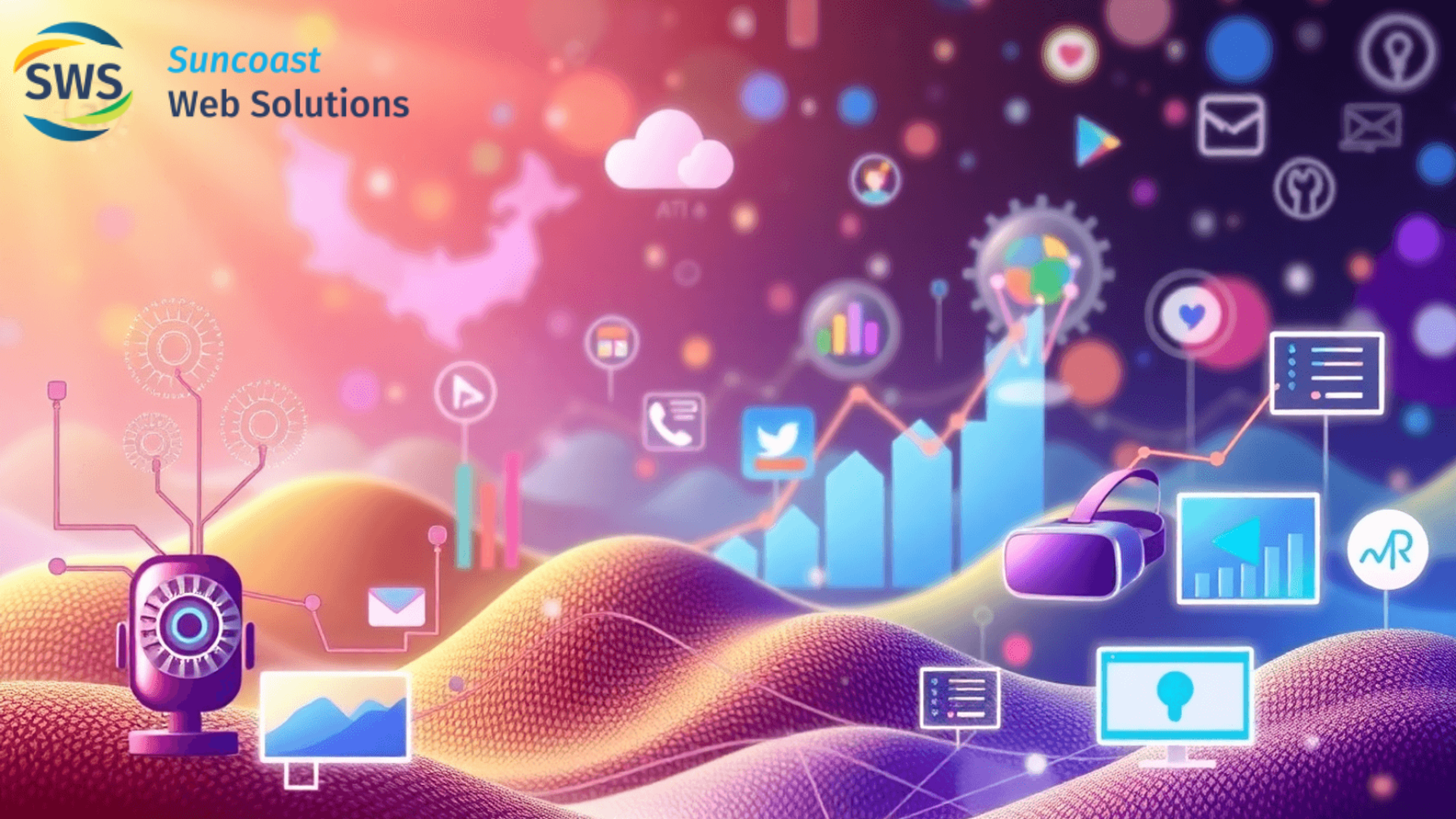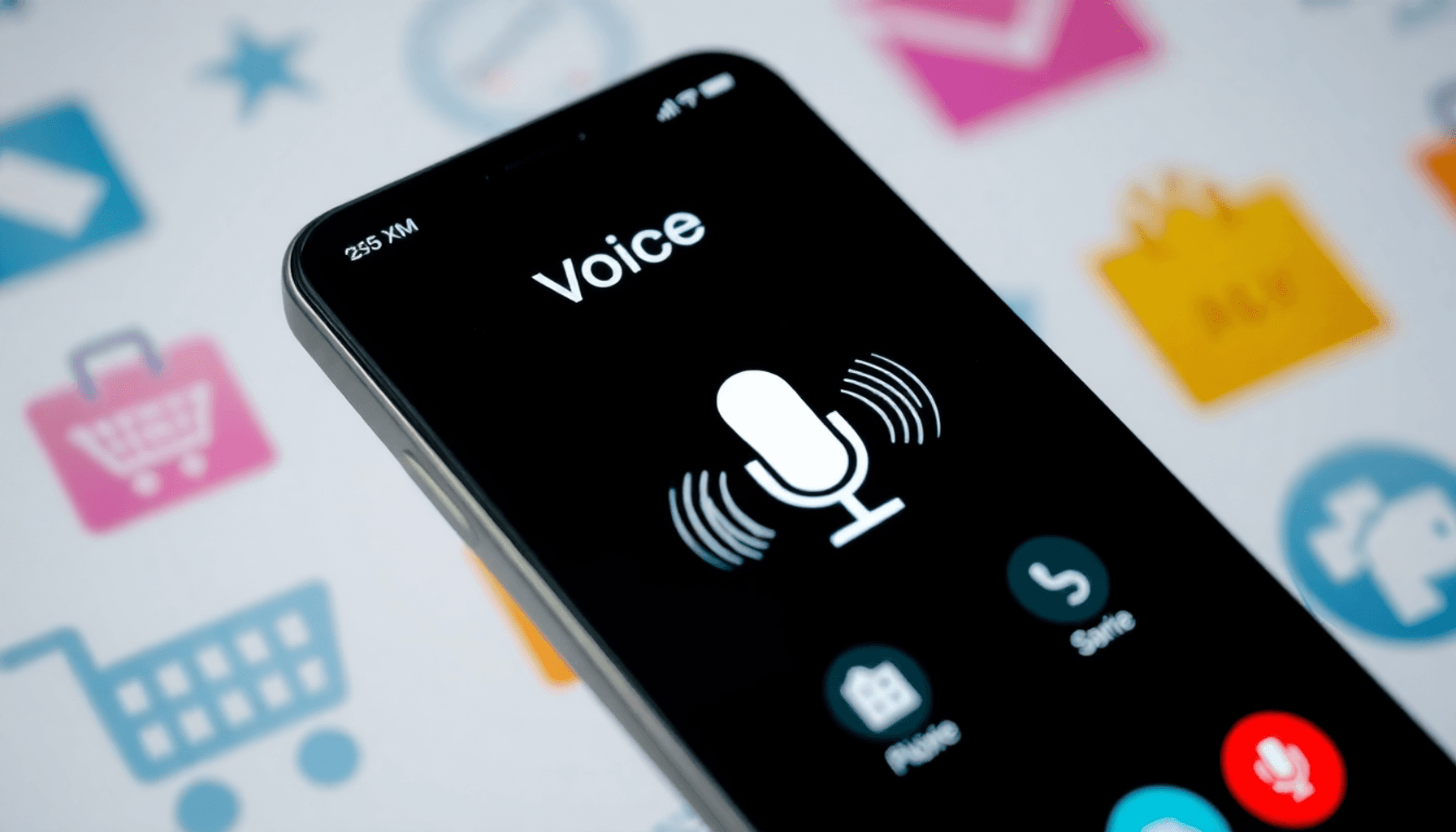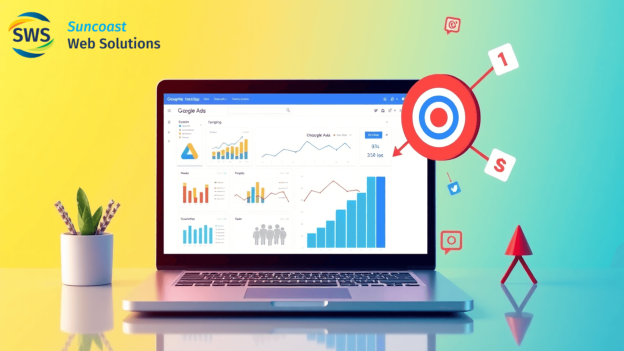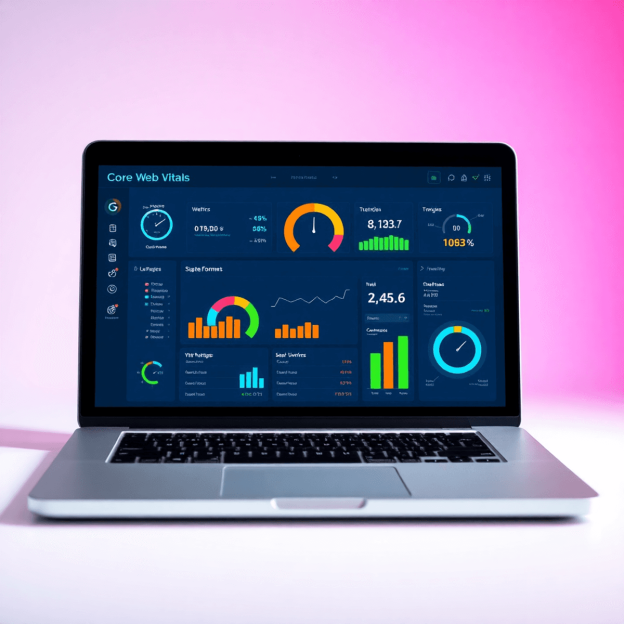
 25th
Jan, 2025
25th
Jan, 2025
The world of digital marketing is always changing, influenced by new ideas and shifting consumer habits. As we look ahead to 2025, there are several important trends that are starting to emerge and will shape the future of digital marketing:
- AI and Machine Learning: These technologies will improve customer segmentation, automate tasks, and provide personalized interactions.
- Voice Search and Voice Commerce: The rise of smart speakers is influencing search behavior, requiring a focus on natural language optimization.
- Augmented Reality (AR) and Virtual Reality (VR): These immersive technologies are set to transform retail experiences, setting new expectations for consumers.
- Video Content Dominance: Short-form videos will continue to thrive across platforms such as TikTok and Instagram Reels, engaging audiences in innovative ways.
- Hyper-Personalization: Brands will use data analytics to deliver highly tailored content and recommendations.
- Social Commerce: The integration of shopping features within social media will blur the lines between these platforms and e-commerce.
- Mindful Marketing Practices: A growing demand for ethical practices will push brands to prioritize sustainability and transparency.
Understanding these digital marketing trends in 2025 will be crucial for businesses looking to stay competitive in this ever-changing landscape.
1. The Role of AI and Machine Learning in Digital Marketing
AI and machine learning are changing the marketing game. These technologies enable brands to analyze large sets of data, providing insights that were previously unattainable.
Key Applications
- Customer Segmentation and Targeting: AI can identify patterns in consumer behavior, allowing for precise segmentation. This results in targeted marketing campaigns that resonate more effectively with specific audiences.
- Task Automation: Routine tasks such as lead nurturing and email marketing can be automated. Tools powered by AI streamline these processes, freeing up time for marketers to focus on strategy and creativity.
- Personalized User Interactions: Machine learning algorithms enhance user experiences through personalization. By analyzing past interactions, brands can craft tailored responses that meet individual consumer needs.
Incorporating AI in marketing strategies not only improves efficiency but also enhances the overall customer experience. As digital marketing trends evolve, leveraging these technologies will be crucial for maintaining a competitive edge.
2. Voice Search and Voice Commerce
The rise of smart speakers has significantly influenced search behavior. As consumers increasingly rely on voice-activated devices, marketers must adapt their strategies to meet these changing preferences. Key considerations include:
1. Growth of Smart Speaker Ownership
With the proliferation of devices like Amazon Echo and Google Home, voice searches are becoming commonplace. This trend necessitates a shift in how brands approach their online visibility.
2. Long-Tail Keywords
Voice searches tend to be more conversational and longer than traditional text searches. Focusing on long-tail keywords is crucial for effective voice search optimization. This strategy allows for a more natural alignment with user queries.
3. Natural Language Processing (NLP)
Adapting content for NLP involves crafting text that mimics spoken language patterns. Techniques such as focusing on questions and creating straightforward answers can enhance discoverability in voice search results.
A strategic embrace of these voice commerce trends will enable brands to connect more effectively with their audiences, ensuring they remain competitive in an ever-evolving digital landscape.
3. Augmented Reality (AR) and Virtual Reality (VR) in Marketing
AR and VR technologies are changing the marketing landscape, creating opportunities for brands to engage customers in innovative ways.
Overview of AR and VR Technologies
- Augmented Reality (AR) enhances the real world by overlaying digital information onto physical environments.
- Virtual Reality (VR) immerses users in a fully virtual environment, creating unique experiences.
Transformative Impact on Retail Experiences
- AR marketing allows customers to visualize products in their own space before purchasing. This capability not only drives engagement but also reduces return rates.
- VR shopping experiences transport consumers to virtual stores, enabling them to browse and interact with products as if they were physically present.
Examples of Immersive Shopping Experiences
- Brands like IKEA utilize AR apps that let customers see how furniture fits into their homes.
- Companies such as Nike offer VR environments for customers to try on shoes virtually, enhancing the decision-making process.
As digital marketing trends in 2025 continue to evolve, integrating AR and VR will be essential for brands aiming to meet changing consumer expectations and create memorable shopping experiences.
4. The Dominance of Video Content
The world of digital marketing is increasingly dominated by video content, especially short videos on platforms like TikTok, Instagram Reels, and YouTube. These platforms have changed the way brands connect with their audiences, focusing on quick, easily consumable content that grabs attention almost instantly.
Key Aspects of Video Marketing Trends:
- Rise of Short-Form Videos: Captivating and concise, these formats cater to diminishing attention spans. Users favor quick entertainment or information snippets, making this an effective strategy for marketers.
- Tools for Simplifying Video Creation: Software such as Canva, Adobe Spark, and InVideo streamline the video production process. Templates and user-friendly interfaces empower even novice creators to produce engaging content.
- Engaging Audiences through Interactive Formats: Features like polls, quizzes, and viewer challenges enhance user participation. Live streaming creates a sense of immediacy and fosters real-time interaction between brands and consumers.
Using these trends can greatly improve your marketing efforts. Making video a central part of your strategy will ensure you stay relevant in the constantly changing digital world.
5. Hyper-Personalization Strategies
Hyper-personalization goes beyond basic customization, which merely modifies content according to general user preferences. Instead, it uses data analysis to provide highly personalized experiences that resonate with each individual.
Key Differences
- Basic Customization: Involves changing elements like names or generic recommendations based on broad demographics.
- Hyper-Personalization: Utilizes dynamic content platforms to analyze user behavior, interests, and engagement patterns, crafting unique experiences for each visitor.
Techniques for Tailored Content Delivery
- Behavioral Targeting: Analyzing past interactions enables brands to predict future needs, tailoring product suggestions.
- Real-Time Recommendations: Using AI algorithms, brands can serve content that evolves with user behavior in real-time.
- Segmentation: Creating micro-segments within larger audiences allows marketers to address specific needs and preferences effectively.
Role of Data Analytics
Data analysis plays a vital role in driving hyper-personalization efforts. By gathering insights from various channels, marketers can gain a comprehensive understanding of customer journeys. This knowledge empowers brands to continuously improve their strategies, ensuring that personalized messages resonate and convert effectively.
Embracing hyper-personalization fosters a deeper connection between brands and consumers, making marketing efforts more effective and relevant.
6. The Rise of Social Commerce
The integration of e-commerce within social media platforms is transforming the digital marketing landscape. The once distinct boundaries between social media and e-commerce are blurring, creating new opportunities for brands to engage with consumers directly.
1. In-app Shopping Features
Platforms like Instagram and Facebook have introduced shopping capabilities, allowing users to purchase products without leaving the app. This seamless experience enhances consumer convenience and encourages impulse buying.
2. Engaging Content Creation
Brands can leverage visually appealing content that inspires sharing. User-generated content, influencer collaborations, and interactive posts increase engagement, making it more likely that consumers will share their experiences. This sharing behavior boosts conversion rates as friends and followers trust recommendations from their networks.
3. Targeted Advertising
With advanced targeting options available on social media platforms, marketers can reach specific demographics efficiently. Personalized ads based on user behavior lead to higher relevance and increased chances of conversion.
As digital marketing trends in 2025 evolve, embracing social media shopping will be essential. Brands must adapt their strategies to incorporate these features for enhanced customer experiences and sustained growth in an increasingly interconnected online marketplace.
7. Mindful Marketing Practices
Consumer demand for responsible business practices is reshaping the landscape of digital marketing. Marketers are increasingly expected to prioritize ethical marketing and incorporate sustainability into their strategies.
Strategies for Sustainability in Advertising:
- Eco-Friendly Initiatives: Brands can highlight their commitment to sustainability through eco-friendly packaging, carbon offset programs, or partnerships with environmental organizations.
- Sustainable Messaging: Communicating the environmental impact of products or services can resonate deeply with consumers who value responsible purchasing.
- Community Engagement: Involving local communities in marketing campaigns fosters a sense of responsibility and aligns brand values with consumer expectations.
Importance of Transparency:
Transparency in communication is essential for building trust with consumers. This includes:
- Clear Information on Practices: Providing details about sourcing, production processes, and labor conditions enhances credibility.
- Open Dialogue: Encouraging feedback and addressing concerns directly can strengthen relationships with customers.
- Authenticity in Storytelling: Sharing genuine stories about sustainable practices can create emotional connections, making the brand more relatable.
Adopting mindful marketing practices not only fulfills consumer demands but also establishes long-term loyalty.
8. Navigating Data Privacy Concerns
Evolving data privacy regulations are reshaping the landscape of digital marketing. As governments implement stricter guidelines, marketers must adapt to stay compliant while maintaining effective strategies. Key aspects include:
1. Regulatory Landscape
Familiarize yourself with GDPR, CCPA, and other regional laws that dictate how consumer data is collected, stored, and used. Understanding these regulations is crucial for avoiding penalties and ensuring ethical practices.
2. Transparency Strategies
Building consumer trust relies heavily on transparent communication regarding data usage. Clearly articulate what data is collected, why it’s necessary, and how it will benefit the consumer. Providing easy access to privacy policies can enhance credibility.
3. Personalization vs. Privacy
Striking a balance between tailored experiences and respect for privacy is essential. Utilize anonymized data and aggregate insights to create personalized content without compromising individual privacy. Implementing opt-in features allows consumers to choose their level of data sharing.
Navigating these challenges requires a proactive approach towards compliance and transparency while fostering an environment where consumers feel secure in sharing their information.
9. Inclusivity in Marketing Approaches
Inclusivity in advertising has emerged as a critical component of digital marketing trends in 2025. Adopting inclusive strategies allows brands to connect authentically with diverse audiences. Key points to consider include:
- Significance of Inclusivity: Brands that embrace diversity in marketing create campaigns that resonate with various demographic groups. This approach not only reflects social values but also fosters a sense of belonging among consumers.
- Benefits of Engagement and Loyalty: Inclusive advertising enhances engagement levels, leading to increased customer loyalty. When consumers see themselves represented in marketing efforts, they are more likely to develop a connection with the brand.
- Successful Brand Examples:
- Fenty Beauty: Pioneered an inclusive makeup line, offering products for a wide range of skin tones.
- Nike: Launched campaigns featuring athletes from diverse backgrounds, promoting messages of empowerment and inclusivity.
- Dove: Consistently showcases real women in their advertisements, challenging traditional beauty standards.
These examples illustrate how brands can harness the power of inclusivity to enhance their market reach while fostering deeper relationships with consumers. Embracing diversity is no longer optional; it is essential for brands aiming for relevance and impact in the evolving digital landscape.
Conclusion
The future outlook on digital marketing trends 2025 demands that marketers embrace change. Emerging technologies and shifting consumer expectations create a landscape ripe for innovation. Key takeaways include:
- Adaptation: Stay updated with advancements in AI, AR/VR, and other technologies.
- Engagement: Foster connections through hyper-personalization and inclusivity.
- Sustainability: Integrate mindful marketing practices into your strategy.
Marketers who prioritize these elements will not only enhance their brand’s relevance but also build lasting relationships with consumers. The digital marketing trends in 2025 will reward those willing to evolve and respond authentically to the needs of their audience. Embrace the challenge; the future of digital marketing is bright for those prepared to lead the way.
FAQs (Frequently Asked Questions)
What are the key digital marketing trends expected in 2025?
Key trends shaping the future of digital marketing in 2025 include the integration of AI and machine learning, the rise of voice search and commerce, augmented and virtual reality experiences, the dominance of video content, hyper-personalization strategies, social commerce, mindful marketing practices, data privacy considerations, and inclusivity in marketing approaches.
How is AI influencing digital marketing strategies?
AI and machine learning play a significant role in digital marketing by enabling customer segmentation and targeting, automating tasks such as lead nurturing and email marketing, and enhancing user interactions through personalized responses.
What should marketers consider for voice search optimization?
Marketers should focus on optimizing for long-tail keywords that align with natural language processing. This is crucial as the ownership of smart speakers grows and influences search behavior.
In what ways are AR and VR transforming retail experiences?
AR and VR technologies are reshaping customer expectations by providing immersive shopping experiences. These technologies allow consumers to interact with products in innovative ways that enhance their overall retail experience.
What is hyper-personalization in digital marketing?
Hyper-personalization goes beyond basic customization by delivering tailored content and recommendations based on individual consumer data. It relies heavily on data analytics to drive personalization efforts effectively.
Why is inclusivity important in marketing approaches?
Adopting inclusive strategies in advertising is significant as it fosters engagement and loyalty from diverse audiences. Brands that successfully implement inclusivity can benefit from increased customer trust and a broader market reach.
WE ARE YOUR ONE-STOP INTERNET MARKETING SOLUTION ON THE SUNSHINE COAST!


















